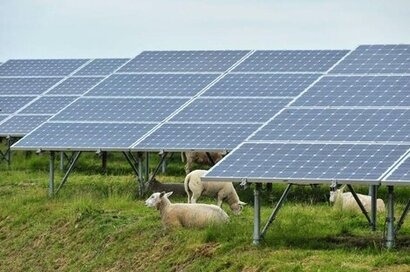
The UK solar industry has been hit by a perfect storm of inflation, supply chain disruption, spiralling interest rates and delays in connection to the National Grid. A new study by Huw Evans, an Energy Consultant and former Head of Global Economics for BG Group suggests that under the current macro-Economic conditions and impasse at obtaining connection to the National Grid, any chance of these solar farms being viable in the near future is negligible. The Government has gambled heavily on promoting solar energy to achieve its stated goal to be carbon neutral by 2035.
In the report, Mr Evans says that despite greatly increased prices offered by the Government in their Contract for Difference (CfD) allocation round, to encourage Renewable Energy, where prices have been increased by 30 percent for Solar Energy, solar developers will still struggle to make any return on their investment. That is before you take into any account delays in connecting to the National Grid.
Mr Evans adds that the UK Government has vastly underestimated the increasing costs to develop solar farms, where their assumptions suggest the UK can develop Solar Energy cheaper than anywhere else in the world; based on published data, which is clearly unrealistic.
Within the report, Huw points to International Renewable Energy Agency (IRENA) data that shows that given the UK’s climate, solar energy is within the worst 5 percent areas in the world to develop solar electricity, as only 10 percent to 11 percent of the capacity of solar farms will ever be generated annually compared to double that in places such as Spain, Australia and parts of the US.
For grid connection, as of November 2023, there are 1,300 projects that are awaiting connection to the grid which amounts to 400 Giga Watts (GW) of grid access requirements. Companies applying for grid access have been told they have to wait 15 years before any electricity they produce can be sold.
New rules issued by National Grid to alleviate the backlog of connections which effectively are “get on, get back or get out of the energy queue” are in danger of creating thousands of acres of white elephants, as grid connections continue to be delayed with diggers tearing up the landscape and then being suspended as projects are put on hold pending a grid connection date.
Mr Evans points out that this as already happened in Torquay, Devon, where diggers have already cleared the site only to be told that grid connection will be at least 5 years and there are indications that that could slip into the mid 2030s. He further notes that Centrica have said that approximately 80 percent of the 300 substations across England and Wales need upgrading and “supergrid transformers are huge bits of kit that weigh several hundred tonnes, and it takes years to install them. We're talking five to eight years for each one of these.”
For projects to progress they will probably need an allocation of a Contract for Difference (CfD) in the auction rounds, which come with a deadline of when the project needs to come on stream, a date from National Grid to be connected which may or may not be in line with the deadline set by the CfD and provide the investor and financiers with a viable return on their investment which in the current climate is very doubtful.
These hurdles are hard to negotiate especially when the bodies that are setting the hurdles are not joined up and are blaming each other for delays in the process. The DNOs (Distribution Network Operator’s) blame National Grid for the delays, National Grid Blames Ofgem and Ofgem blames the National Grid, but there is no mandate for Ofgem and National Grid to invest in the grid because that cost will be passed on to the consumer. No Government wants to do that.
Peter Aston, a specialist connections engineer at the consultancy Roadnight Taylor notes, “2035 is just 12 years away and some of the transmission projects easily take 10 years to 12 years to complete.”
For additional information:

